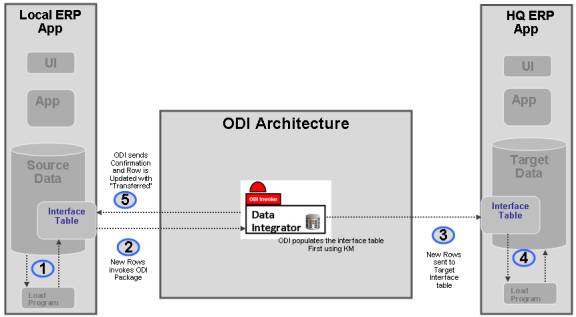Leveraging advanced features and techniques in Oracle Data Integrator (ODI) can enhance the functionality, performance, and efficiency of your data integration processes. Here are some advanced ODI features and techniques to consider:
- Knowledge Modules (KMs):
- Utilize custom Knowledge Modules (KMs) to extend ODI’s capabilities and tailor data integration processes to specific requirements.
- Develop custom KMs to handle specialized data sources, transformations, or specific integration scenarios.
- Leverage pre-built KMs provided by Oracle or the ODI community to address common integration patterns and optimize performance.
- ODI SDK:
- Use the ODI Software Development Kit (SDK) to programmatically interact with ODI objects and automate tasks.
- Develop custom scripts or applications using the ODI SDK to automate repetitive processes, integrate with external systems, or extend ODI functionality.
- Changed Data Capture (CDC):
- Implement Changed Data Capture techniques to identify and capture incremental changes in source data.
- Use ODI’s CDC framework to efficiently process and load only the changed data into the target systems, reducing processing time and improving performance.
- ODI Web Services:
- Develop and expose ODI interfaces as web services.
- Use ODI’s web services capabilities to enable integration with other systems, applications, or external clients.
- Expose specific ODI interfaces as web services to provide data integration functionality to external consumers.
- Parallel Execution:
- Leverage parallel execution features in ODI to improve performance and minimize processing time.
- Configure ODI interfaces and mappings to execute in parallel, taking advantage of multi-threading and distributed processing capabilities.
- ODI Load Plans:
- Utilize ODI Load Plans to orchestrate and schedule complex data integration workflows.
- Create Load Plans to define dependencies, execution order, and conditional execution of ODI objects like interfaces, packages, and procedures.
- Use Load Plans to manage complex scenarios involving multiple steps, error handling, and recovery mechanisms.
- ODI Operator:
- Utilize the ODI Operator interface for monitoring and managing data integration processes.
- Monitor execution logs, statistics, and real-time progress of ODI objects using the Operator.
- Leverage features like session monitoring, error handling, and resuming failed executions from the Operator interface.
- ODI Data Services:
- Use ODI Data Services to expose data integration logic as reusable services.
- Create data services to provide a unified and consistent interface for accessing and integrating data from various sources.
- Data Services can be consumed by different applications, systems, or reporting tools, simplifying data access and integration.
- ODI Load Balancer:
- Implement ODI Load Balancer to distribute workload across multiple ODI agents and optimize resource utilization.
- Configure load balancer settings to evenly distribute the execution of ODI objects across available agents, improving performance and scalability.
- ODI Variables and User Functions:
- Leverage ODI Variables to store and manage dynamic values and configurations.
- Use ODI User Functions to create reusable custom functions that can be utilized across interfaces, mappings, and procedures.
- Variables and User Functions enhance flexibility, code reusability, and maintainability in ODI development.
By leveraging these advanced ODI features and techniques, you can optimize your data integration processes, extend ODI’s capabilities, and achieve more efficient and powerful data integration solutions.
SHARE
